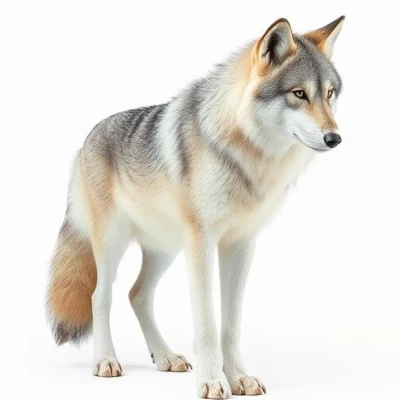
The Russian Wolf (Canis lupus), a subspecies of the gray wolf, is an iconic predator of the vast Russian wilderness. Adapted to extreme climatic conditions, this majestic carnivore plays a crucial role in northern ecosystems.
The Russian Wolf is one of the largest subspecies of the gray wolf. Adult males can weigh up to 80 kg, with a length reaching 160 cm without the tail. Its dense fur, generally gray with shades of white or brown, allows it to withstand harsh winters. Its large paws act as natural snowshoes in deep snow.
The Russian Wolf belongs to the Canidae family.
The Russian Wolf inhabits various habitats across the country, from boreal forests (taiga) to Arctic tundras, and the southern steppes. It is primarily found in Siberia, the Russian Far East, and the northwestern regions of the country. Its territory can extend over several hundred square kilometers.
Contrary to popular belief, Russian wolves live in well-organized family packs, usually consisting of 5 to 10 individuals. The pack is led by an alpha pair that makes important decisions. Wolves communicate through howls, body postures, and scent marking.
This superpredator primarily feeds on large ungulates such as deer, moose, and wild boar. During lean periods, it can subsist on small mammals, birds, or even berries. An adult wolf consumes an average of 3 to 5 kg of meat per day.
Although not globally threatened, the Russian Wolf faces several challenges:
In Russia, its hunting is regulated but remains a common practice in some regions.
The Russian Wolf shares its ancestry with several other wolf subspecies:
In Russian folklore, the wolf holds an ambivalent place:
Observing wolves in Russia requires patience and preparation: